
Who Were
The Cambs
The Cambs
at War
1/1st Btn 1914-1919
1914 - 1/1st Overview
1915 - 1/1st Overview
1915 - St Eloi
1915 - Fosse Wood
1916 - 1/1st Overview
1916 - The Schwaben
1916 - St Pierre Divion
1917 - 1/1st Overview
1917 - St Julien
Insignia, Medals & Books
Remembering The Cambs
Biographies
About Us &
This Site
A Basic Guide to the Orders & Medals Awarded to the Men of The Cambridgeshire Regiment for the Great War.
The men of the Cambs were awarded numerous medals for their services during peace time and while at war. The medals vary from the Territorial Force Efficiency Medal for long service in the TF through to awards for acts of gallantry in the face of the enemy during the war such as the Distinguished Conduct Medal.
Below is a basic guide to most of the Great War era medals that people will find to the men of the Cambridgeshire Regiment TF.

A group of Warrant Officers and NCOs of the Cambridgeshire Regiment in the 1920s wearing their medals.
Distinguished Service Order
Post nominal entitlement: D.S.O.
Instituted: 6th September 1886
The Distinguished Service Order is a level two gallantry award only awarded to officers, and normally to those above the rank of Major, but in exceptional circumstances of personal gallantry can be awarded to more junior officers. The award is gold (silver gilt) with white enamel arms with the obverse displaying a central green enamel wreath circling the imperial crown. The reverse is similar with the exception that it bears the royal cypher within the wreath. The ribbon is red with blue edges and there are two ornamental suspension bars, one joined to the top of the medal and another at the top of the ribbon. Further awards of the Order are denoted by the wearing of an additional bar on the ribbon for each award. Bars are plain gold with the imperial crown in the centre. The Order is issued unnamed but recipients sometimes have their names engraved on the reverse of the lower suspension bar. Notification of the award is always published in the London Gazette and often contains a citation of the circumstances of the action as well as details of the recipient.
Number of awards to the Cambridgeshire Regiment during WW1:
DSO and two Bars: 1
DSO: 5
Military Cross
Post nominal entitlement: M.C.
Instituted: 28th December 1914
The Military Cross is a level three gallantry award which can be awarded only to officers with the rank of Captain or below, or Warrant Officers. It is a solid silver ornamental cross with a plain reverse and plain silver suspender bar. It bears the royal cypher in the centre of four arms each bearing imperial crowns. The ribbon is three equal width vertical stripes of white, purple and white. Further awards of the cross are denoted by the wearing of an additional bar on the ribbon for each award. Bars are plain silver with the imperial crown in the centre. The cross is issued unnamed but recipients often have their names engraved on the reverse of the cross. Notification of the award is always published in the London Gazette and often contains a citation of the circumstances of the action as well as details of the recipient.
Number of awards to the Cambridgeshire Regiment during WW1:
MC and two Bars: 2
MC and Bar: 6
MC: 28 to Officers, 3 to Warrant Officers, 31 in total
Distinguished Conduct Medal
Post nominal entitlement: D.C.M.
Instituted: 4th December 1854
The Distinguished Conduct Medal is a level two gallantry award which can only be awarded to other ranks. The obverse for the First World War period bears the effigy of the reigning monarch and the reverse bears the text: FOR DISTINGUISHED CONDUCT IN THE FIELD. The medal is solid silver, 36 mm in diameter and hangs on a swivelling ornamental suspender. The ribbon is three equal stripes of red, dark blue and red. Subsequent awards of the medal are denoted by the wearing of a silver bar bearing laurel wreaths and when issued to British troops the medal is always issued bearing the name, rank, number and regiment of the recipient in impressed san serif upper case letters on the rim. Notification of the award is always published in the London Gazette and will generally contain a citation of the circumstances of the action as well as details of the recipient.
Number of awards to the Cambridgeshire Regiment during WW1:
DCM and Bar: 2
DCM: 32
Military Medal
Post nominal entitlement: M.M.
Instituted: 25th March 1916
The Military Medal is a level three gallantry award, available only to other ranks (although this includes Warrant Officers who were also eligible to receive the Military Cross). The obverse bears the effigy of the reigning monarch and the reverse bears the text: FOR BRAVERY IN THE FIELD. The medal is solid silver, 36 mm in diameter and hangs on a swivelling ornamental suspender. The ribbon is dark blue with three equal stripes of white and two of red. Subsequent awards of the medal are denoted by the wearing of a silver bar bearing laurel wreaths and when issued to British troops the medal is always issued bearing the name, rank, number and regiment of the recipient in impressed san serif upper case letters on the rim. Notification of the award is always published in the London Gazette but unlike the DCM, MC and DSO does not include a citation of the circumstances of the action, only the name, rank, number, regiment and home town of the recipient.
Number of awards to the Cambridgeshire Regiment during WW1:
MM and Bar: 5
MM: 172
Mention in Despatches
A Mention in Despatches is the lowest of the gallantry awards and does not have its own discrete medal. Although awarded prior to 1914 a special emblem to denote a Mention in Despatches was instituted during the First World War and was worn on the ribbon of the Victory Medal. It consisted of a bronze spray of oak leaves. Theoretically, during the First World War, the Mention in Despatches and the Victoria Cross were the only gallantry awards that could be awarded posthumously so if a soldier died during their act of bravery they could only earn one of these two awards (this rule was later changed in 1979). Mentions in Despatches could be awarded to all ranks and notifications are generally always published in the London Gazette though no citations are included. Only one emblem is worn, regardless of how many awards have been made.
Number of awards to the Cambridgeshire Regiment during WW1:
45
1914-15 Star
Instituted: 1918
The 1914-15 Star is a campaign medal awarded to all personnel who served overseas during 1914-15. It is single sided, made of bronze and is a four pointed star with a crown in place of the top point and has crossed swords diagonally opposed to the point and bears a scroll centrally containing the date 1914-15. It has a fixed ring suspender and the ribbon is watered with equal stripes of red, white and blue. All ranks were eligible to receive this medal and the reverse is impressed with the name, rank, number and regiment of other ranks or the name, rank and regiment of officers.
Number of medals awarded to the Cambridgeshire Regiment:
Approx 1500.
British War Medal
Instituted: 1919
The British War Medal is a campaign medal awarded to all personnel who had qualified for the 1914-15 Star and those who served overseas during the War. It is solid silver; 36mm in diameter and double sided, bearing the effigy of King George V on the obverse and St George on horseback on the reverse. It has a fixed plain suspender bar and the ribbon is orange with a white, black and blue stripe at each edge. All ranks were eligible to receive this medal and the rim is impressed with the name, rank, number and regiment of other ranks or only the name and rank of officers.
Number of medals awards to the Cambridgeshire Regiment during WW1:
Approx 6000.
Victory Medal
Instituted: 1919
The Victory Medal is a campaign medal awarded to all personnel who had qualified for the 1914-15 Star and the majority of those awarded the British War Medal. It is yellow bronze, 36mm in diameter and double sided, bearing the standing figure of Victory on the obverse and the words: THE GREAT WAR FOR CIVILISATION 1914-1919 on the reverse. It has a loose ring suspender and a double rainbow coloured ribbon. All ranks were eligible to receive this medal and the rim is impressed with the name, rank, number and regiment of other ranks or only the name and rank of officers.
Number of medals awards to the Cambridgeshire Regiment during WW1:
Approx 6000.
Territorial Force War Medal
Instituted: 1919
In August 1914 Cambridgeshire Regiment personnel were asked whether they were prepared to volunteer for overseas service. Those who did volunteer and then served overseas were issued with the 1914-15 Star but those with four years’ service who served overseas in later years had nothing to show that they had volunteered early and were only awarded the British War and Victory Medals, the same medals as those who were conscripted. To recognise this, the Territorial Force War Medal was instituted and awarded to qualifying personnel. The medal is bronze, 36mm in diameter suspended on a plain fixed suspender bar on a watered gold ribbon with two green stripes towards the edges. The obverse bears the effigy of King George V and the reverse bears a wreath enclosing the text: FOR VOLUNTARY SERVICE OVERSEAS 1914-1919. All ranks were eligible to receive this award and the rim is impressed with the name, rank, number and regiment of other ranks or the name, rank and regiment of officers.
Number of awards to the Cambridgeshire Regiment during WW1:
Officers: 5
Other ranks: 21 (although numerous examples are seen named to the Cambs Regt that are not on their roll)
Memorial Plaque
Instituted: 1919
The Memorial Plaque is a solid single sided bronze plaque bearing an image of Britannia and a Lion with a tablet on the right side containing the full name of the dead in raised lettering. The wording around the circumference reads: HE DIED FOR FREEDOM AND HONOVR. The plaque with an illuminated scroll was given to the next of kin of personnel who died during the war. The next of kin of women also received a plaque in which case the wording was SHE DIED…
The actual number of Memorial Plaques given to the next of kin for Cambridgeshire Regiment soldiers is hard to calculate. Sources differ as to the exact number of men who died whilst actually serving with the Cambridgeshire Regiment; and many officers were only attached to the unit from other units, but it is thought to be 866 (77 officers and 789 other ranks). However, many men served with the Cambridgeshires who then died or were killed in action with other regiments so the number of men who at some point served with the regiment and whose families were given Memorial Plaques is likely to be much higher.
Silver War Badge
Instituted: 12th September 1916
The Silver War Badge, or often misnamed Silver Wound Badge, is a brooch style circular badge awarded to service personnel who sustained a wound or who contracted an illness or disability for which they were invalided out. It is solid silver, 36mm in diameter and has a pin fixing on the reverse. The obverse has the cypher of King George V and the words: FOR KING AND EMPIRE and FOR SERVICES RENDERED around the circumference. Silver War Badges were not named with the recipient’s details but were numbered on the reverse and this number can be cross-referenced against the records of issue. More information on the "SWB" can be found by clicking here.
Number of badges awards to the Cambridgeshire Regiment during WW1:
Exact number unknown but likely to be around 1000.
Territorial Decoration
Instituted: 29th September 1908
The Territorial Decoration is a long service award made only to officers. It is a skeletal style round medal with the cypher of the reigning monarch in the centre of an oval oak wreath made of solid silver with a loose ring suspender and the ribbon is dark green with a central yellow stripe. Awarded for 20 years’ commissioned service with service in the ranks counting half and War service counting double. Superseded in 1930 by the Efficiency Decoration. Issued unnamed but has the hallmark of the year of issue on the reverse.
Number awarded to the Cambridgeshire Regiment:
11 (plus 2 awarded to the Regimental Chaplains).
Territorial Force Efficiency Medal
Instituted: 1908
The Territorial Force Efficiency Medal is a long service award made only to other ranks. It is an oval medal 31mm wide by 38mm high in solid silver and bears the effigy of King George V on the obverse and the words: TERRITORIAL FORCE EFFICIENCY MEDAL on the reverse. The ribbon, like the Territorial Decoration is dark green with a central yellow stripe. It was awarded for 12 years’ service with service in the Territorial Force with bars awarded for additional 12 year periods. It is always impressed with the name, rank, number and regiment on the rim.
Number awarded to the Cambridgeshire Regiment:
Exact number unknown.
In response to the large volume of questions we have received about medals we have produced a list of 'Frequently Asked Questions' with unbiased detailed answers that we hope people will find helpful.
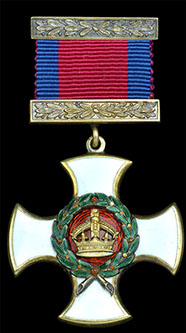
Distinguished Service Order (DSO).
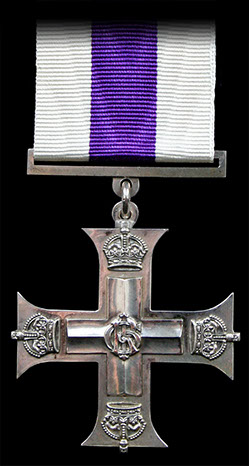
Military Cross (MC).
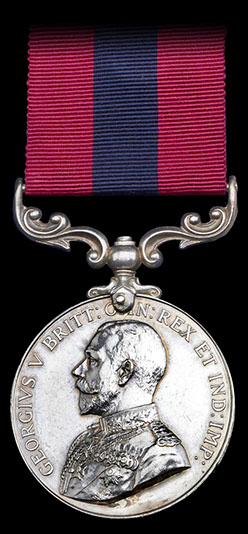
Distinguished Conduct Medal (DCM).

Military Medal (MM).

Mention in Despatches Oakleaf (MiD).
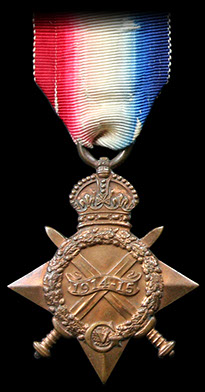
1914 - 15 Star.

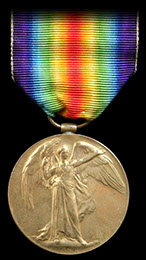
British War Medal & Allied Victory Medal.
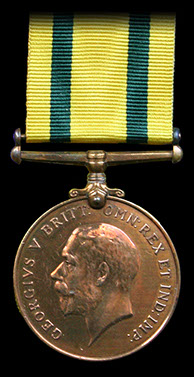
Territorial Force War Medal (TFWM).

Memorial Plaque.

Silver War Badge (SWB).
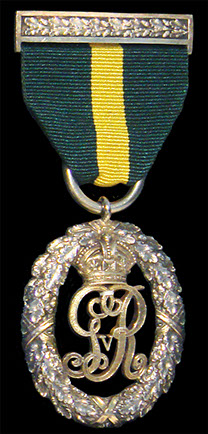
Territorial Decoration (TD).
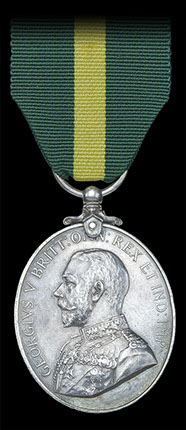
Territorial Force Efficiency Medal (TFEM).

This site went live on the 14th February 2015 to mark 100 years since the 1/1st Cambs went off to war.
WE WILL REMEMBER THEM
Email us: cambsregt@gmail.com
Copyright 2015, 2016, 2017, 2018, 2019 by Felix Jackson. The information and images on this site should not be reproduced without prior permission.